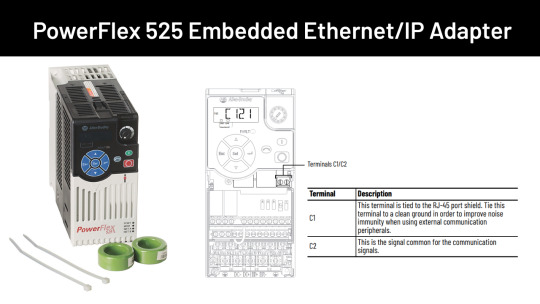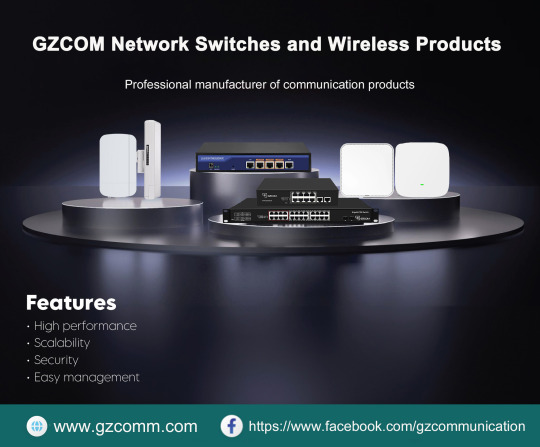#Ethernet switch
Explore tagged Tumblr posts
Text
10 gig switch vs 2.5 gig vs 1 gig: Which do you need?
10 gig switch vs 2.5 gig vs 1 gig: Which do you need? @vexpert #vmwarecommunities #100daysofhomelab #homelab #NetworkSwitches #GigabitSwitch #MultiGigabitSwitches #10gigswitch #SmartManagedSwitches #UnmanagedSwitches #NetworkPerformance
There are many choices when it comes to networking in your home lab or in the enterprise. The choices range from 1 Gig switches to multi-gigabit switches that offer speeds of 2.5 Gig and even 10 Gig. These switches are the backbone of any network, whether small businesses, large enterprises, or home labs, driving connections and managing data transmission. Selecting the right switch is not just…

View On WordPress
#Bandwidth Management#Ethernet Switch#Gigabit Switch#Multi-Gigabit Switches#network performance#Network Scalability#Network Switches#Power Over Ethernet#Smart Managed Switches#Unmanaged Switches
3 notes
·
View notes
Text

Marvell 98 cx8520, 98 cx8530, 98 cx8540, 98 cx8550, 98 cx8580 Ethernet switch
0 notes
Text
PowerFlex 525 Embedded Ethernet/ IP Adapter

The PowerFlex 525 Variable Frequency Drive (VFD) from Rockwell Automation features an embedded EtherNet/IP adapter, enabling seamless integration with EtherNet/IP networks without requiring additional communication modules.
#automation#trending#tumblr trends#viral#bestdeals#trendingnow#allen bradley#rockwell automation#viralpost#powerflex525#VFD#ethernet switch
0 notes
Text
#Juniper Networks#ex4300#48t#5s#ethernet switch#48 ports#youtube#@inphi#@lucent#@marvell#@nokia#@alcatel#@xcalable
0 notes
Text
#juniper networks#ex3400#ethernet switch#poe#qsfp#24ports#amazon#ebay#walmart#newegg#alcatel#lucent#nokia#cisco
0 notes
Text


Friend from Bangladesh, It is a pleasure to meeting you, my Friend .
0 notes
Text
10 Port Ethernet Switch
The Versitron 10 Port Ethernet Switch delivers reliable and efficient network performance with its 10 high-speed ports, making it an ideal choice for expanding your network infrastructure. Designed for seamless integration and robust connectivity, this switch supports fast data transfer rates and ensures smooth communication across connected devices. Its compact and durable design suits both small and large network environments, providing a dependable solution for managing and optimizing your network setup.
0 notes
Text

Professional Network Equipment Provider GZCOM offers high-quality PoE Switches, Ethernet Switches, and Access Points to meet your networking needs. contact us exceptional networking experience!
WhatsApp:+8615899967691
email :[email protected]
0 notes
Text
A site focuses on industrial Ethernet switches.
1 note
·
View note
Video
youtube
Netgear GS305E 5-Port Gigabit Ethernet Smart Managed Plus Switch Review
1 note
·
View note
Text
Marvell DX1508 DX1518, DX1528 DX1538, DX1548 industrial iot (IIoT) Ethernet switch
0 notes
Text
What is a managed Ethernet switch?
Managed switches provide security settings that can be configured to protect the network and to help identify threats.
#automation#trending#viral#tumblr trends#bestdeals#trendingnow#allen bradley#rockwell automation#viralpost#ethernet switch#plc
1 note
·
View note
Text

Ethernet Switch Market to hit $26.1 billion by 2031
The ethernet switch market was valued at $17.2 billion in 2021, and is estimated to reach $26.1 billion by 2031, growing at a CAGR of 4.4% from 2022 to 2031.
Read More: https://www.alliedmarketresearch.com/ethernet-switch-market-A07364
#ethernet switch market#ethernet switch#switch#Electronic Security#Modular Ethernet Switches#Fixed Configuration Ethernet Switches
0 notes
Text
Understanding Relay Module Circuits: A Comprehensive Guide
Introduction:
Relay module circuits are essential components in various electronic and electrical applications. These circuits act as switches, allowing control signals from one circuit to activate or deactivate another circuit. Relay modules provide an efficient way to isolate high-power devices from low-power control systems, ensuring safety and protection. In this comprehensive guide, we will delve into the fundamentals of relay module circuits, their working principles, applications, and address some frequently asked questions (FAQs) to provide a complete understanding of this crucial aspect of modern electronics.
I. What is a Relay Module Circuit?
A relay module circuit consists of an electromechanical relay mounted on a PCB (Printed Circuit Board). The relay is an electromagnetic switch that is actuated by a control signal, which can be either digital or analog. When the control signal triggers the relay, it closes or opens the electrical contacts, allowing current to flow through the output terminals and control external devices or circuits.
II. How Does a Relay Module Circuit Work?
Electromagnetic Coil: The relay module circuit has an electromagnetic coil that serves as the input or control element. When an appropriate voltage is applied to the coil, it creates a magnetic field, causing the relay's armature to move.
Normally Open (NO) and Normally Closed (NC) Contacts: A relay typically has two sets of contacts: Normally Open (NO) and Normally Closed (NC). In the resting state, the NO contacts remain open, and the NC contacts remain closed.
Switching Action: When the coil is energized, the armature moves, causing the NO contacts to close and the NC contacts to open. This switching action completes or interrupts the circuit, depending on the application.
III. Types of Relay Module Circuits:
Single-Pole, Single-Throw (SPST) Relay: SPST relays have one set of contacts and can either be Normally Open or Normally Closed.
Single-Pole, Double-Throw (SPDT) Relay: SPDT relays have one set of normally open contacts and one set of normally closed contacts. When the relay is energized, the NO contacts close, and the NC contacts open.
Double-Pole, Single-Throw (DPST) Relay: DPST relays have two sets of contacts that operate simultaneously, making or breaking the circuit.
Double-Pole, Double-Throw (DPDT) Relay: DPDT relays have two sets of NO contacts and two sets of NC contacts. They provide two separate circuits that can be independently controlled.
IV. Applications of Relay Module Circuits:
Home Automation: Relay modules are commonly used in home automation systems to control lighting, heating, ventilation, and air conditioning (HVAC) systems.
Industrial Automation: In industrial automation, relay modules are used to control motors, pumps, solenoids, and other high-power devices.
Automotive Electronics: In automobiles, relay modules are utilized to control various electrical systems, such as headlights, windshield wipers, and electric windows.
Robotics: Relay module circuits are used in robotics to control the movement of actuators and motors.
Security Systems: In security systems, relay modules are used to trigger alarms and control access points.
V. Advantages of Using Relay Module Circuits:
Isolation: Relay module circuits provide galvanic isolation between the control circuit and the load, ensuring safety and protecting sensitive components.
Low Power Control: Relay modules allow low-power control systems to switch high-power devices, eliminating the need for high-power control circuits.
Versatility: Relay module circuits are available in various configurations and voltage ratings, making them versatile and suitable for a wide range of applications.
Simple Operation: Relay modules are easy to install and operate, making them a popular choice in many electronic applications.
FAQs:
Q1. Can relay module circuits be used for both AC and DC applications? Yes, relay modules are available in both AC and DC versions, allowing them to be used in a wide range of applications.
Q2. What is the difference between a relay and a relay module? A relay is the basic electromagnetic switch, while a relay module includes the relay mounted on a PCB with additional circuitry for ease of use and integration into other systems.
Q3. Can relay modules handle high-current applications? Yes, relay modules are available in different current ratings, and they can handle high-current applications as per their specifications.
Q4. How do I choose the right relay module for my application? When selecting a relay module, consider the voltage and current requirements of your application, the type of load (AC or DC), and the number of contacts needed.
Q5. Can I use a relay module to control multiple devices simultaneously? Yes, some relay modules have multiple sets of contacts (DPDT or more), allowing you to control multiple devices independently.
Conclusion:
Relay module circuits are versatile and indispensable components in modern electronics and electrical systems. Their ability to provide isolation, low-power control, and versatility makes them ideal for a wide range of applications in various industries. By understanding the working principles and different types of relay modules, along with their numerous applications, designers and engineers can make informed decisions when integrating these circuits into their projects. Relay module circuits continue to play a critical role in enhancing the efficiency and control capabilities of electronic systems, contributing to advancements in automation and smart technologies.
0 notes
Text

H3C Switch & HPE MSA 2060 16GB Memory / HK ETEST GROUP
R0Q78A R0Q77A R0Q76B R0Q76A R0Q75B R0Q75A R0Q74A R0Q73B R0Q73A R0Q62A R0Q61A R0Q60A
0 notes